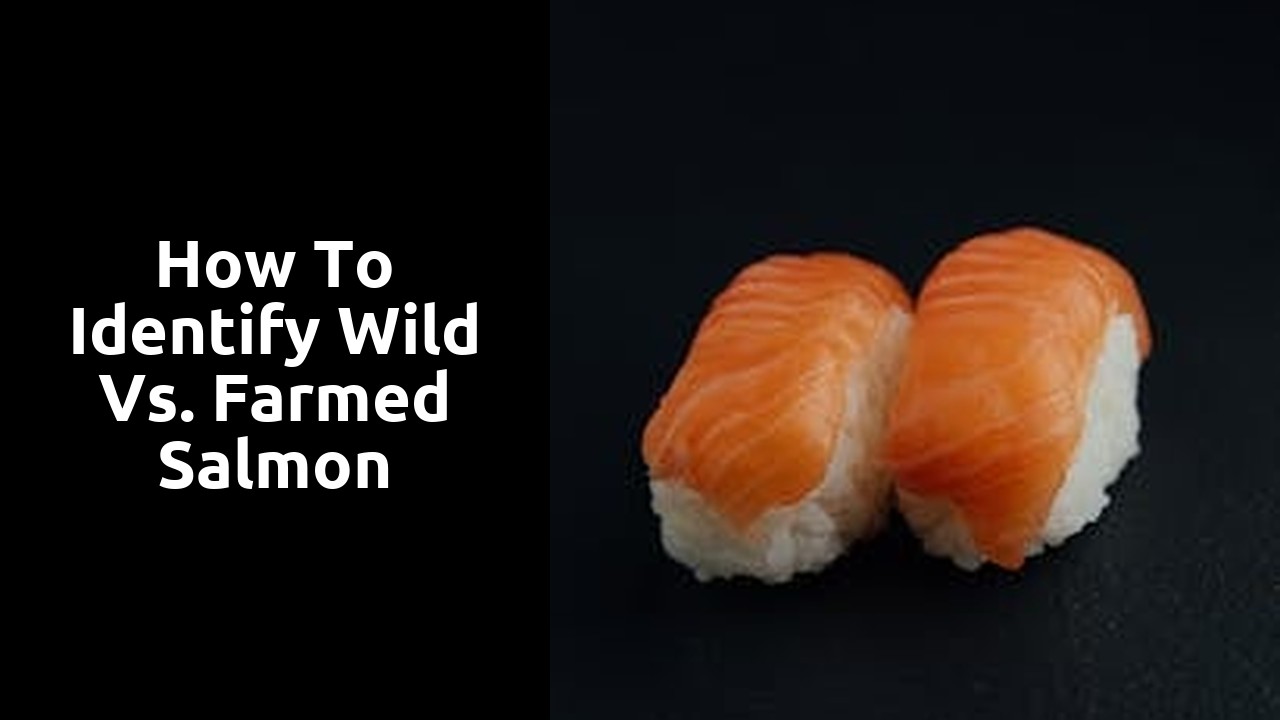How to Identify Wild vs. Farmed Salmon

Health Concerns Associated with Farmed Salmon
There are several health concerns associated with consuming farmed salmon that consumers should be aware of. One major issue is the use of antibiotics in farmed salmon production. Due to the close quarters in which farmed salmon are raised, they are more prone to diseases and parasites. To combat this, antibiotics are often used to prevent and treat illnesses. However, the overuse of antibiotics in fish farming can lead to antibiotic resistance, posing a risk to human health.
Another health concern related to farmed salmon is the presence of contaminants such as polychlorinated biphenyls (PCBs) and dioxins. Farmed salmon are often fed a diet that includes fish meal made from other fish that may have accumulated high levels of these contaminants. Consequently, these toxins can accumulate in the flesh of farmed salmon. When consumed in excess, PCBs and dioxins have been linked to various health issues including cancer, developmental problems, and hormonal imbalances.
Antibiotic Usage
Antibiotic usage in farmed salmon has raised concerns over the years due to the potential implications it has on human health. The practice of administering antibiotics to fish in aquaculture can lead to antibiotic-resistant bacteria, which can pose a significant risk to consumers. The excessive use of antibiotics in fish farming can contribute to the overall problem of antibiotic resistance, making it an important issue to address in the industry.
It is essential for consumers to be aware of the antibiotic usage in farmed salmon and make informed decisions when purchasing seafood. Opting for wild salmon instead of farmed varieties can help mitigate the risks associated with antibiotic residues in fish. By choosing wild-caught salmon, consumers can support sustainable fishing practices and enjoy a product that is free from the concerns linked to antibiotics in aquaculture.
Cost Analysis of Wild vs. Farmed Salmon
When weighing the cost factors associated with wild versus farmed salmon, consumers often find themselves contemplating the balance between price and quality. Wild salmon typically commands a higher price due to the labour-intensive and unpredictable nature of sourcing fish from natural habitats. The inherent costs of maintaining sustainability in wild salmon fisheries contribute to the premium price tag associated with this option, resulting in a more expensive product for consumers seeking a taste of the untamed.
On the other hand, farmed salmon offers a more economical alternative, with controlled environments allowing for higher production outputs and consistent supply. The streamlined processes involved in salmon aquaculture enable farmers to regulate feeding, growth rates, and environmental conditions, ultimately translating to a more cost-effective seafood choice for budget-conscious shoppers. Despite the more accessible price point, it is important to consider the differences in quality, taste, and environmental impact when making a decision between wild and farmed salmon.
Price Disparities
When it comes to the price discrepancies between wild and farmed salmon, consumers are often faced with a decision that not only impacts their wallets but also their health and the environment. Wild salmon tends to be more expensive than its farmed counterpart due to the cost of catching fish in the wild compared to farming practices. Moreover, the demand for wild salmon exceeds its supply, further driving up the price.
Farmed salmon, on the other hand, is generally more affordable as it can be produced in larger quantities using controlled breeding practices. This lower cost makes farmed salmon a more accessible option for consumers looking to incorporate salmon into their diet without breaking the bank. However, it is essential for consumers to consider the potential health and environmental implications when deciding between wild and farmed salmon, as the cheaper price tag of farmed salmon may come at a higher cost in the long run.
Sustainability Factors of Wild Salmon Harvesting
Sustainability is a crucial aspect of wild salmon harvesting. Proper population management is essential to ensure that salmon populations are not depleted beyond the point of recovery. By monitoring and regulating fishing practices, authorities can help maintain a healthy balance between the number of salmon caught and the overall population size in the wild. This approach ensures that future generations can continue to enjoy the benefits of this valuable natural resource.
Additionally, protecting the habitats where wild salmon live is crucial for their long-term sustainability. Preserving clean water sources, maintaining appropriate water temperatures, and safeguarding spawning grounds are all vital aspects of ensuring the continued health and wellbeing of wild salmon populations. By prioritising the conservation of these habitats, we can help to safeguard the future of wild salmon for years to come.
Population Management
Population management is a critical aspect of ensuring the sustainability of wild salmon. Overfishing can lead to a decline in the wild salmon population, disrupting the delicate balance of marine ecosystems. To prevent these issues, strict regulations and monitoring systems are put in place to control the number of salmon that can be harvested each season. By carefully managing the population, authorities aim to allow for the natural reproduction and growth of wild salmon stocks.
Implementing population management strategies involves close collaboration between fisheries, scientists, and government agencies. Data on salmon population sizes, migration patterns, and breeding habits are collected to inform decision-making processes. This information helps in setting quotas and season limits to protect the long-term viability of wild salmon stocks. Through effective population management, we can work towards preserving the natural habitats and biodiversity of salmon populations for future generations to enjoy.
Related Links
What Are the Differences Between Wild and Farmed SalmonHow to Choose Sustainable Salmon Fillets
The History of Overfishing and Depletion of Wild Salmon Stocks
Review: The Environmental Impact of Aquaculture Practices